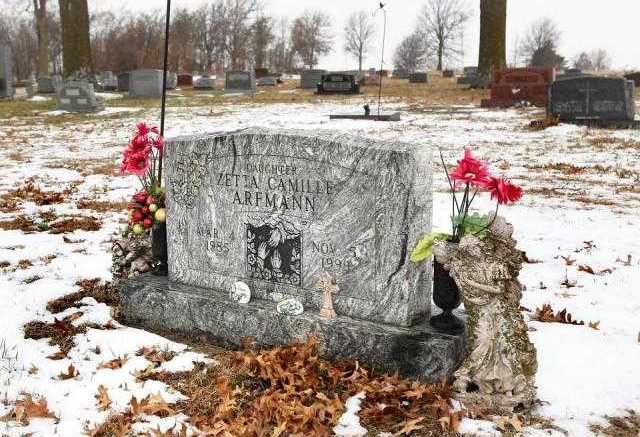Buried and briefly mentioned within a federal lawsuit filed this month is a new theory on a 16-year-old question: Why was Camille Arfmann killed?
Arfmann stepped off a school bus in Oskaloosa on Nov. 5, 1999, and was found dead less than three days later. The 14-year-old had been shot four times and buried beneath garbage in the northern outskirts of the small Jefferson County town.
The question of who killed her remained in doubt until last autumn when Tom Bledsoe, a brother of the man convicted of the crime, Floyd Bledsoe, admitted to the crime in a series of suicide notes. Floyd was released from prison and has since filed a lawsuit against the Jefferson County officials who falsely accused him.
But the question of why Tom Bledsoe killed Arfmann remains unanswered.
The first theory, put forth by Tom himself in his suicide notes, is that the killer and his victim had consensual sex at the home of Tom’s parents, where he was living at the time. The two then left the house and he asked Arfmann to never discuss their sexual encounter.
“That’s when I found out she was 14 and I freaked out so I drove up to the ditch where the family dump trash and tried to convice (sic) her not to tell,” he wrote. “Everything was happening so fast I couldn’t think. I went to my truck and got my 9m gun that was behind my seat and pushed her to the ground to try to scare her, but it faild (sic) when the gun went OFF behind her head. It was accident I didn’t mean to kill her.”
The second of two theories emerged in Floyd Bledsoe’s lawsuit May 10.
The lawsuit alleges Jim Woods — a Kansas Bureau of Investigation agent who investigated Arfmann’s murder — and other law enforcement officers “withheld their documentation of Tom’s detailed confession that he had tried to have sex with Camille in his truck, that she had laughed, and that he had then shot her.”
There are reasons to doubt the first theory. Tom Bledsoe had known his victim, who was Floyd Bledsoe’s sister-in-law, for several years and attended church services with her multiple times a week. Though Tom had intellectual limitations, it is unlikely he didn’t know Arfmann’s age.
Furthermore, ballistics tests showed the first gunshot that struck Arfmann was fired horizontally into the back of her head. The gunshot was a contact injury, according to former Shawnee County coroner Erik Mitchell, meaning the gun was pressed against the victim’s neck when it went off.
In his suicide note, Tom describes trying to push Camille to the ground and, as he is doing so, the gun going off behind her head. According to Mitchell’s analysis, this gunshot was “fairly horizontal,” meaning Tom, if he told the truth in his note, was standing upright with the gun barrel on Camille’s neck when it went off. Camille also must have been standing up at the time.
The second theory, allegedly told by Tom in the days after Arfmann’s body was found in 1999, could better explain the horizontal trajectory of the first bullet. Two people sitting in a truck are more likely to be of equal height than one person who is standing and another who is falling.
Tom, by his own admission, had the murder weapon in his truck and cuts on Arfmann’s back led Mitchell to conclude she had been dragged to the pile where her body was found. Those details offer circumstantial evidence that either theory could be accurate.
Ultimately, a jury may decide which of the two theories, if either, is true. Floyd Bledsoe’s attorneys have demanded their lawsuit be given a jury trial in Kansas City, Kan., and summonses were issued to a dozen defendants on May 12. A trial date hasn’t yet been scheduled.
Source: cjonline.com





Be the first to comment on "Floyd Bledsoe’s Federal Lawsuit Offers New Theory on 1999 Murder of Camille Arfmann"